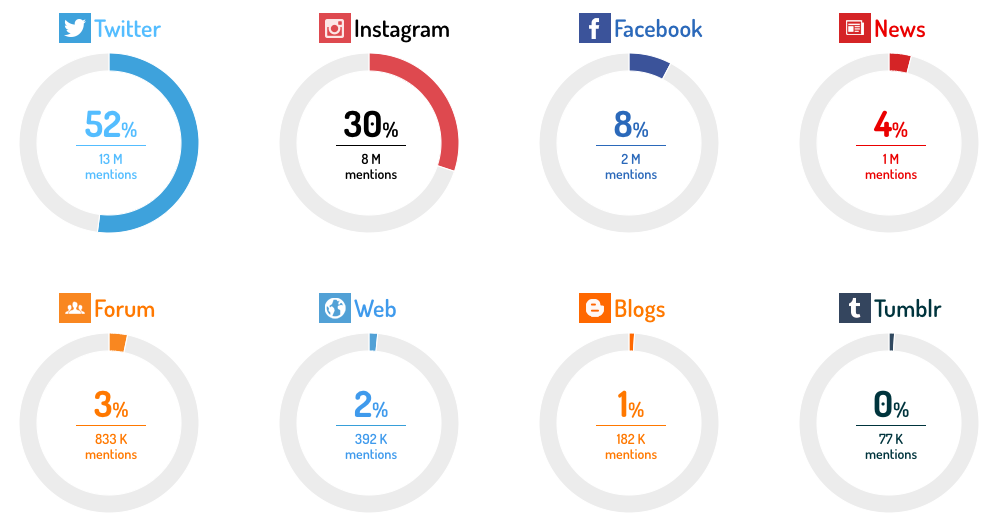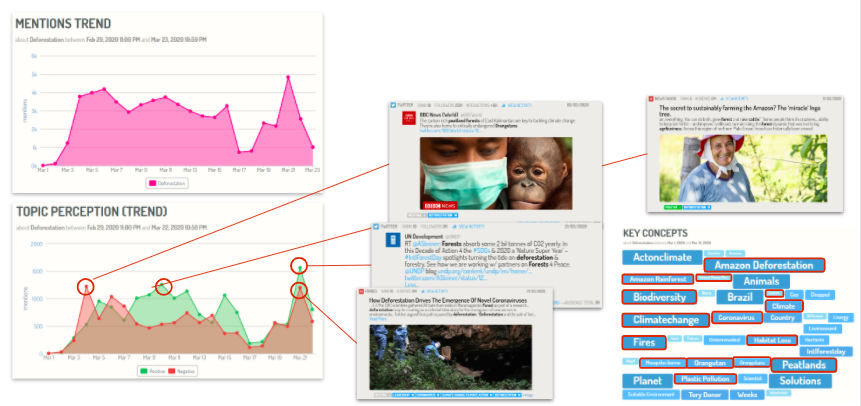3 Mistakes Consumer Insights Professionals Make And How To Correct Them
The current market landscape in 2020 looks unlike that of its predecessor, 2019, in that all insights professionals are faced with a slew of challenges directly tied to consumers. Despite record sales in specific industries that have catered to the quarantine lifestyle, many Brands and Insights professionals still struggle with easy-to-avoid mistakes that can cause financial headache and potential crises down the line. Whether it’s an overreliance on antiquated listening methods, choosing to only analyze limited data sets, or simply misunderstanding the key insights they have, Consumer Insights specialists would do well to learn from past errors and remember a few essential considerations.
The main issue that has hampered many companies today come from a shift of basing their overall strategies from appropriately listening to customers and considering their thoughts and emotions in reaction to trends, to an overtly financial one, where consumers have less and less input - brands are effectively putting less emphasis on listening at a time when we should be doing so more than ever.
Check out Digimind’s latest Industry Report on Stay-At-Home Industries for a comprehensive examination of this unique period
Consumer insights are too important to drop the ball with, especially when you consider the fact that without consumer insights, and the proper means of analyzing them, teams are no better than sailors without a compass or map. Brands need to reorient themselves and adopt strategies that utilize social listening tools, and then hear what people really have to say. Below we will go over three glaring mistakes that Consumer Insights and Market Research professionals make, and the ways in which they can turn the ship around for smoother sailing into a proverbial sunset of success.
1. Overreliance On Survey Data
The tools at our disposal are certainly diverse and multi-functional when it comes to obtaining data. But with so many ways to reach out and listen to consumers, it’s highly problematic that many agencies and businesses continue to rely solely - or at least put a stronger emphasis on - broad communication surveying. To its credit, surveying is not just an old system of mailing questionnaires to lonely house wives on whether they prefer green over red jello for their upcoming dinner parties, it’s a legitimate and specialized method of examining and recording information directly from people who're considered a general target audience. But an overreliance on this method can leave many Consumer Insights teams woefully under informed, and this can lead to biased data, bad insights, or both.
Surveys, as a means of obtaining useful information are poor choices for a few reasons:
- They’re tedious and likely to lose enthusiasm and turn off potential customers who’re otherwise loyal when it comes to the brand.
- They’re often misleading for both the takers and the administrators of the surveys, regardless of platform being utilized (be it physically, digitally, personally, etc).
- Surveying is woefully inadequate when it comes to identifying specific data points that are often crucial for understanding key insights.
Put in another way, we could look at two groups - one team of Consumer Insights professionals that rely solely on surveying, and a second team that mostly focuses on social data with sparing use of surveys, if at all. The former team is like a target shooter firing rapidly, but blindly, into the dark, whereas the latter team takes careful aim of their target with intent and focus. Which do you believe will hit their mark?
How to correct this mistake: Instead of relying on surveying as a major source of data - which as we've discussed is often flawed and not enough - Consumer Insights professionals need to diversify their toolset and focus on other methods of research that offer comprehensive options for gleaning various sources of consumer information. The trick here is to be discerning when choosing an appropriate platform - always partner with those that can offer extensive social listening, valuable social conversation tracking, and most importantly, those that have established a trusted and reliable name through numerous industry awards and impressive client list.
2. Missing Out On Important Social & Digital Data Sets
Now that we’ve solved the mistake of obtaining data improperly, we need to address the mistake that many Consumer Insights pros make when it comes to using the right data when developing their digital marketing strategies. Just by understanding how digitally-reliant we’ve become, and how much we’ve moved our communities and networks onto social media, should be a wake up call for all of us to make sure and include all sets of data that are relevant to the market research.
Less a lapse of judgement, and more simply a miscalculation in where to focus their attention, Consumer Insights specialists sometimes break the cardinal rule of social listening, that being the conscious decision to narrow the scope of their research in the name of time efficiency. However this choice only serves to limit the scale of the information available when gleaning key insights, a serious mistake that can ultimately change the results of a project, muddy the analytics when obtaining crucial data, and doom a brands future outreach to customers, both loyal and potential.

These side-by-side charts comparing the overall mentions of a topic on various platforms demonstrate strong use of both social and digital data sets.
How to correct this mistake:: include both social AND digital data as part of the development for your digital marketing strategies. Consumer Insights professionals have a lot to lose and nothing to gain when they choose not to listen online - this includes social media, content creators, digital forums, and review-based sections on websites that directly communicate the sentiments that customers have for a brand’s products and/or services.
3. Presenting Data As Just Data
Lastly, it’s important to highlight a major misstep that continues to plague even the most seasoned veterans in marketing and consumer insights, which is to make sure and focus on the underlying messaging of the insights you come up with and understand how to effectively utilize them moving forward. Look at the example below:

A clear and understandable depiction of the Digimind platform identifying peaks of social media conversations online, which highlight key insights that are crucial for professionals.
Here we see the Digimind platform providing a search on the topic of “Deforestation” between the months of February and March, in a clear and easily understandable way. Once the social data is established through the query, it's possible to analyze the underlying conversations and trends that’ve been isolated by a complete review. Failing to listen to the data thoroughly will mean a lessened ability to glean valuable insights. From there one can fully flesh out the complete picture of said insights and use those to further inform a marketing strategy or response to a brand crisis.
How to correct this mistake: Never neglect the key insights or look past the social data that has been collected from extensive research like so many Consumer Insights specialists have. The data can be vast and daunting, but one does their team a disservice by not listening to their customers and speaking at them instead of doing the hard work and emphasizing valuable insights over gut interpretation. Failing to do this, one will not be able to tell an understandable story with said data.
Data Above All Else
Remember that much of what has been covered here are the errors of personal inflexibility and ignorance, when instead true professionals need to admit when their normal processes don’t work and must adopt more innovative and AI-focused tools to garner authentic, human-based results. If Consumer Insights professionals take the time to transition more from survey-heavy methods, gather all data sets which include both social and digital data, and remember to always listen to said data for the most useful consumer insights, then they'll always be in the best position to market their brand online and off.
Written by Micah Levin
With a background in creative writing, advertising, and psychology, Micah is a copywriter in name and a Digiminder at heart. When he's not developing content for agencies, you can find him crafting novels, cooking and running around in Brooklyn, NY.

